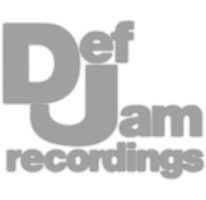Positioning your monitors properly is essential to getting the most accurate performance from them and creating a true stereo image. Thanks to the SpeakerAngle app from Genelec, it's never been easier to dial your monitors in to a perfect equilateral triangle.
It is no secret that drums are the foundation of mixing across the majority of contemporary genres. They drive an immense amount of feel and emotion to any given song without much melodic context. Drums and their overall aesthetic alone can easily make or break any mix. Why? They are complex in nature, and they often cover the entire audible frequency spectrum. This can make them a challenge for novices and professionals alike. However, the truth is that a variety of fundamental concepts will provide the tools to make your drums sing within a mix! This article aims to portray those essential drum-mixing concepts in a chronological fashion. Regardless of genre, the following concepts can provide fundamental concepts to take your drums to the next level.
Loudness is a major concern for almost every artist and engineer. In an industry that’s flooded with plugins and gear that continually tries to offer a one size fits all preset to make your music louder than then next person, we have missed the foundation of how to actually achieve loudness.
While working with a mix, a mastering engineer must use tools that mix engineers may not consider. While there is overlap with the types of compression or EQ that are used, the process for a mastering engineer involves only a single stereo file versus the tracks that make up the entire song. This means that if the guitar is too loud, or the vocal is too quiet, a mastering engineer is unable to adjust individual volumes of these pieces. One of the approaches that can be used to enhance the “space” between similar elements is to use stereo imaging tools to narrow or widen frequency ranges across the stereo field. While this may not affect the individual levels of tracks, these tools can work wonders to bring out the important frequencies in instrumental or vocal performances within the stereo file. Using stereo imaging tools during the mix stage can be done however, and learning to use them appropriately, may help give you a three dimensional sound and bring your mix to life.
Aside from vocals, drum tracks serve as the most prominent elements in most forms of modern music. Not only do drums provide the rhythmic foundation of to a song, but they can also cover the entirety of the audible frequency spectrum. As engineers, becoming proficient in the art of treating and mixing drums is one of the most difficult yet essential tasks we face. However, learning essential tips and techniques on how to methodically organize and set up drum tracks before mixing, will set you up for later success. Initial drum organization yields success and can save a lot of time, second-guessing, and head scratching further down the road during the mix process. This article will aim to provide insight on how to effectively address and organize your routing, grouping, soloing, parallel channels, fx sends, phase relationships, and tuning for your drum tracks. We can make our drums rock before mixing even commences!
Have you ever listened to a song and noticed that the snare sounded a little brighter during the chorus, the kick had more of a thump, and the vocal effect had changed from an eighth-note to a quarter note delay. A mix tends to get boring hearing the same sonic textures from beginning to end. That’s why mix engineers use plugin automation to create impact and keep the audience engaged!
Everyone wants to make hit records, but little do they know of the hundred small steps that go in to getting a client and taking them to a finished mix that is ready to be sent off to mastering.
Mix-bus compression has been used in countless recordings. We all like a punchy mix that sounds cohesive, and mix-bus compressors have achieved this for many engineers. Applying this technique to your own mixes can be challenging. There are tons of compressors available, but they are not all created equally. Here are some popular choices for mix-bus applications.
Have you ever heard a mix that just doesn’t sound like the songs you hear on the radio? You try to dissect why it’s just not reaching that level but you can’t quite change it enough to sound like a platinum-selling record. Of course there can be thousands of reasons why it’s just not cutting it, but there is one thing that we see time and time again, that has played a major effect in making a good mix turn sour.
As audio engineers we live in a very exciting time. The capabilities and quality of the digital audio domain continue to expand and improve at unprecedented rates. High quality recordings are more affordable than ever to make. The commercial studio business is on the downfall, while home/project/mobile studio professionals and hobbyist are on the rise. Many audio professionals perceive this as a negative shift due to a flood of amateur quality audio content released across many social media and music distribution platforms. On the contrary, many see it as an opportunity by embracing the competition and starting their own business from the ground up, on a computer alone. These general trends in the audio business have been underway for quite some time now, but as of the last few years the digital audio tech companies have been releasing products that even veteran and old school engineers alike can be excited about. That is, digital emulation of classic analog masterpieces. Tape machines, compressors, EQs, preamps, and many other popular analog tools that were used to make your favorite records are now being released as plugins to be used within the DAW of your choice. The software is modeled to sound like and be controlled in the same manner as their original analog predecessors. In this article, we will be discussing the digital emulation of tape machines in particular. We will discuss a brief history of analog tape, characteristics of analog tape, common parameters of tape, and last, but not least, plugins that can get you started in no time(well, maybe some time)!
So what is mix-bus compression exactly? Put simply, it is the use of a compressor on the stereo mix-bus within in your DAW or console output. When used correctly, this type of compression can add cohesiveness and punch to mixes that may have been missing before. How does this happen? Let’s start with compression on a single track.
Starting into music production, I didn't know much about the technical side of audio engineering. Personally, I thought all music was recorded and some old guy with a huge soundboard would move a few faders and the song would be finished. I thought everything good about a song was just in the lyrics and songwriting. Shortly after being introduced to a web-based music production sites I started to realize there’s much more to music. Things like equalization and compression are things that need to be used but what are they? How hard could making music be? Can’t you get along without “mixing” your song?
After a mix engineer completes a mix, it is good practice that the mix is sent to a mastering engineer. Most often the mastering engineer performs stereo mastering and works on a single stereo file to prepare a well-polished track ready for commercial distribution. However, many mix engineers don’t realize that there is another option when it comes to the mastering process. The less often alternative is called stem mastering. Unlike stereo mastering, stem mastering involves more than one and usually many (up to 8) stereo files that are treated individually. By giving the mastering engineer access to predetermined sections of the mix, the mix engineer is providing more flexibility to the mastering process while keeping key elements of the original mix intact. The stems can be sectioned to fit the mix engineer’s needs, but often stems are created based instrument type or frequency content. In this article we will examine some key ideas surrounding stem mastering, discuss the ins and outs, and help you prepare your files if you decide it is right for any of your mixes.
Many great audio engineers swear by parallel processing and for good reason. It may be one of the most essential tips to creating a great mix. The simplicity of blending an affected channel with a raw one can do wonders. The question is, where should we apply this technique? Is it necessary all the time? Is it that big of a deal? We’ll run through using effects in parallel on drums, vocals, bass, and everything in between.
Do you want your vocals to have that thick, huge sound you hear on so many successful artists? Vocals that sound so full and present? Is there a common formula that is being repeated across different genres, producers and engineers? The answer to these questions is yes.









